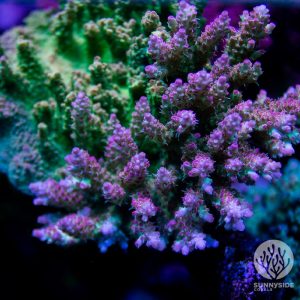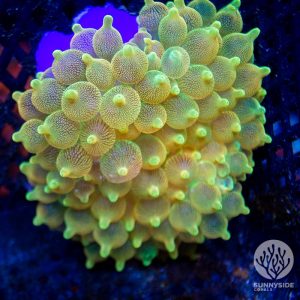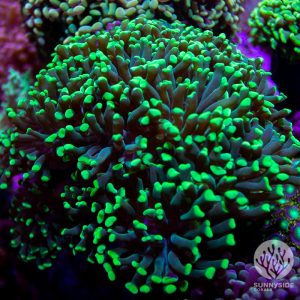Knowing how to acclimate corals is essential to smoothly transition new corals to your tank. If new to the hobby or have been at it for years, the excitement of adding new corals to your aquarium never gets old. However, introducing corals to a new environment can be challenging and stressful for both the corals and their caretakers. That’s where acclimation comes in. Acclimation is the process of slowly and safely introducing corals to their new environment, giving them time to adjust to changes in water chemistry, temperature, and lighting. In this blog, we’ll explore the importance of coral acclimation and provide you with some tips and tricks to help ensure the health and success of your new coral additions. So, whether you’re a seasoned coral keeper or just starting out, sit back, relax, and let’s dive into the world of acclimating corals!
Do I Need to Acclimate My Corals
When you get your new corals you most likely have the perfect place in mind and want to add it to your tank right away. That being said, it is strongly recommended that you do not directly place your new coral into your tank. The process of moving a coral from one tank to another causes extreme stress. By placing it in a new system, without acclimating it first, you risk shocking your new coral and potentially killing it. By acclimating your coral you allow the coral to gradually adjust to the new water conditions
The primary reason for acclimating corals is to give them time to adjust to changes in water parameters such as temperature, salinity, and pH. These parameters can vary greatly between different aquariums, and sudden changes can shock and stress the corals. Acclimating the corals gradually over a period of time allows them to slowly adjust to the new conditions, reducing the likelihood of stress and health problems.
Acclimation also allows the corals to adjust to the lighting conditions of the new aquarium. Light is essential for the growth and health of corals, and sudden changes in lighting intensity can cause the corals to bleach, which is a condition where the corals expel their zooxanthellae (photosynthetic algae) and turn white. By slowly acclimating the corals to the new lighting conditions, you can help prevent bleaching and ensure the corals remain healthy and vibrant.
Overall, acclimating coral is a critical process that should not be overlooked. By taking the time to acclimate your corals properly, you can help ensure their health and longevity in your aquarium.



How to Acclimate Your Saltwater Coral
Here at Sunnyside, this is the acclimation process that has helped us to see a lot of success when it comes to adding new corals into our tanks.
-
Float your new corals in the bag they arrive in, in your tank.
-
Introduce your coral slowly to your tank water.
-
Dip your corals.
-
Rinse your corals.
-
Place your new corals in your tank.
1. Float your new corals in the bag they arrive in, in your tank.
Start by floating the new frag in the tank or sump in order to get the temperature up. The goal is to get the water your new coral came into the same temperature as the tank before you start introducing it to new water.
2. Introduce your coral slowly to your tank water.
Take the water from the bag the coral came in and place it, as well as the coral, into a separate container to start the process. Do a slow drip or a series of small cups full of your system’s water and add it slowly to the container until you have at least doubled the water that the coral came in so it is a 50/50 ratio of your tank water and the new coral’s old water. This process should take 5-10 minutes.
3. Dip your corals
At this point, you want to put our corals through the dipping process. Learning how to dip your corals is key to a healthy system and should not be skipped even if you are worried about the health of your coral.
4. Rinse your corals.
After our coral has been dipped, always do a rinse with the water that you are moving the coral into. Typically let the coral sit in clean tank water in the container for approximately 5-10 minutes before moving it into its new home.
5. Place your corals in your tank or QT tank
All of our corals are acclimated and placed into a quarantine tank when we first get them and then we acclimate them again when we move them to their final destination. Some hobbyists recommend starting your frag lower in your system to provide it with low flow and lighting and then moving it slowly until it’s placed where you want it to go. The idea behind this is that you can avoid bleaching your coral by acclimating it to the flow and lighting. We typically choose to directly place our corals where we want them to be instead. This allows them to be where we know they’ll be happiest.
However, acclimating the lighting and flow can be helpful if you’re just starting out and are concerned about placement. We have a lot of experience with the types of corals in our systems, allowing us to have a pretty good idea of where they need to be. That being said, we do continue to watch them after they’ve been placed to see if any adjustments need to be made. If so, we them move them accordingly.
Ultimately it’s important to note that every tank is different. There are a lot of factors that contribute to keeping your coral happy and healthy. We have found that this process works the best for us, but also encourage you to use this as a guide for your own system and find what works best for you. Please, reach out to us if you have any questions and one of our experts will be happy to help you.
